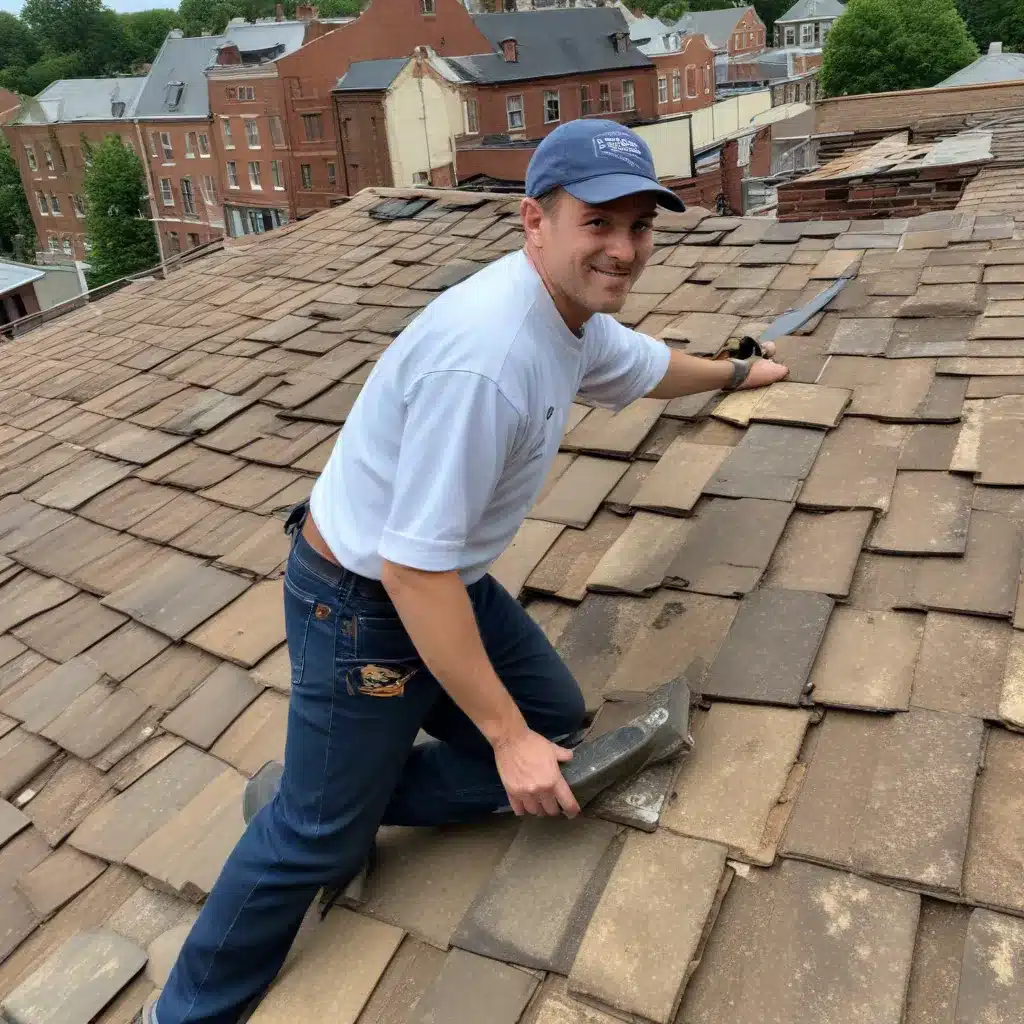
Understanding the Unique Challenges of Restoring Historic Roofs
Northampton’s rich architectural heritage is a testament to the region’s long and storied past. From stately manors to quaint village churches, the rooftops of these historic structures tell a captivating story about the evolution of roofing techniques and materials over the centuries. As modern roofers, we have the privilege of preserving these cherished buildings, ensuring their roofs remain functional and structurally sound while maintaining their original character.
Repairing the roofs of historic properties, however, presents a unique set of challenges that require specialized expertise and a deep appreciation for preservation. Unlike newer constructions, historic roofs were often built using methods and materials that are no longer common, posing complex technical and logistical obstacles. Roofers must not only possess advanced roofing skills, but also a keen understanding of architectural history and a commitment to upholding the original design intent.
Mastering Traditional Roofing Techniques
One of the primary challenges in repairing historic roofs lies in mastering the traditional techniques used in their construction. Many older buildings feature intricate slate or tile roofs, which require a level of craftsmanship that is rapidly becoming a lost art. Skilled roofers must be able to carefully remove, clean, and reinstall these delicate materials, ensuring a seamless integration with the existing structure.
Similarly, historic buildings often incorporate the use of lead, which was a popular roofing material for centuries. Working with lead presents unique safety concerns and requires specialized training to ensure the material is handled and disposed of properly. Roofers must also be adept at techniques such as lead burning, which involves fusing lead components together to create a watertight seal.
In addition to traditional materials, historic roofs may feature unique architectural elements, such as turrets, dormers, or complex roof lines. Navigating these intricate designs requires a deep understanding of carpentry, engineering, and roofing best practices to maintain the integrity of the structure while preserving its historical authenticity.
Ensuring Structural Integrity and Weatherproofing
Beyond the aesthetic considerations, the primary objective of any roof repair project is to ensure the structural integrity and weatherproofing of the building. This is particularly challenging when working on historic structures, as their original construction methods may not have been designed to withstand the rigors of modern weather patterns and environmental stresses.
Roofers must carefully assess the condition of the roof’s underlying framework, identifying any areas of weakness or decay that may compromise the structure’s stability. This may involve reinforcing or replacing damaged timber beams, repairing masonry chimneys, or addressing issues with the roof’s load-bearing system.
Equally important is ensuring the roof’s weatherproofing capabilities. Historic roofs often feature unique joinery techniques and flashing systems that may not integrate seamlessly with modern materials. Roofers must be adept at integrating new waterproofing elements, such as underlayments or sealants, while preserving the visual integrity of the original design.
Navigating Regulatory Challenges and Historic Preservation Guidelines
One of the most significant hurdles in historic roof repair projects is navigating the complex regulatory environment and adhering to historic preservation guidelines. These properties are often subject to strict local ordinances and may fall under the jurisdiction of historic preservation societies or government agencies.
Roofers must be well-versed in the applicable regulations and work closely with stakeholders to ensure their proposed repairs align with the building’s historical significance. This may involve obtaining special permits, utilizing approved materials, or even seeking approval for specific construction techniques.
Failure to comply with these guidelines can result in costly delays, legal challenges, or even the rejection of the proposed repairs. Successful roofers in Northampton must possess a deep understanding of the local regulatory landscape and a proven track record of collaborating with historic preservation authorities to find innovative solutions that meet both practical and aesthetic requirements.
Embracing Sustainable Roofing Practices
As concerns about environmental sustainability continue to grow, historic roof repair projects present an opportunity to incorporate eco-friendly roofing practices. Many historic buildings were designed with inherently sustainable features, such as natural ventilation, minimal use of materials, and long-lasting construction techniques.
Roofers in Northampton can build upon these existing sustainable elements by exploring the use of environmentally-friendly roofing materials, such as reclaimed slate or tile, or by implementing renewable energy solutions like solar panels that blend seamlessly with the building’s historic character.
By embracing sustainable roofing practices, roofers can not only preserve the architectural heritage of Northampton’s historic structures but also contribute to a more sustainable future for the community.
Conclusion: Preserving the Past, Securing the Future
Repairing the roofs of Northampton’s historic buildings is a complex and multifaceted endeavor that requires a unique blend of technical expertise, creative problem-solving, and a deep respect for the region’s architectural legacy. Roofers who rise to this challenge play a vital role in safeguarding the structural integrity and visual character of these cherished structures, ensuring they can continue to captivate and inspire generations to come.
As the caretakers of Northampton’s historic roofs, roofers must continuously evolve their skills, stay up-to-date with the latest preservation techniques, and collaborate closely with local authorities and preservation societies. By doing so, they can preserve the past while also shaping a more sustainable future for the community.
The secrets to successful historic roof repair lie in the roofers’ ability to balance practical considerations with the need to uphold the original design intent. Through their dedication and expertise, Northampton’s roofers can ensure that the rooftops of the past remain a vital part of the region’s vibrant present and promising future.

